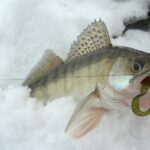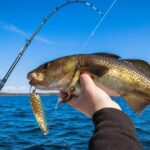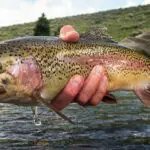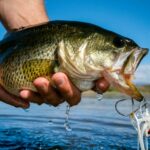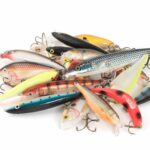While it may still require a certain level of skill to catch perch, generally speaking, it is one of the easiest fish to catch.
Thanks to the species’ abundance in most bodies of water and its small size, beginners and experienced anglers shouldn’t have any issues.
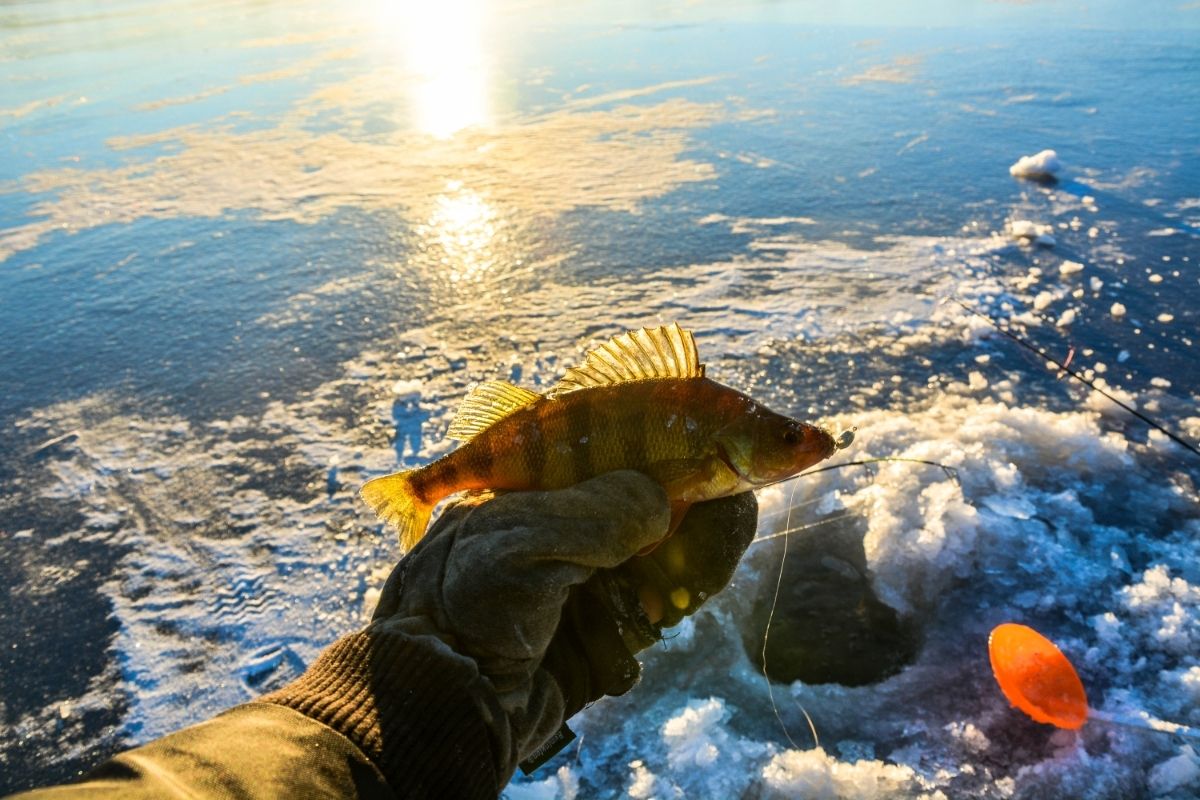
However, Bigger perch that weigh 1 to 2 lbs or more are a little harder to target, requiring greater levels of skill to catch.
If you’re planning on catching a trophy perch, it’s essential to use the best rig setup for perch fishing.
Using the best rig setup will increase your chances of success and quickly see you bringing in bigger fish.
In this article, we’ll show you the 6 best perch fishing rigs and everything you need to know about each one. We’ll show you how to use them and when’s best to.
If you want to improve your knowledge of perch fishing and up your game, make sure you stick around!
Why Are Perch So Popular?
Before we start looking at the best rigs to use when catching perch, let’s first learn more about the fish and why so many people choose to fish for it.
Despite being relatively small, perch is widely regarded as a prize catch by many anglers.
There are a number of reasons for this, but the main one is the fact they are so readily available.
You’ll find perch in large numbers in most lakes.
While they may be quite easy to catch for most, perch are also quite agile.
They like to put up a good fight, which makes them a satisfying catch for most anglers.
Finally, perch is also a good place for beginners to get started.
Smaller-sized perch are much easier to catch, giving newbie’s the perfect opportunity to get practice in before moving on to a more challenging species.
The Best Perch Fishing Rigs
Now you know more about why anglers enjoy fishing for perch so much, we can get to the main part of this article by looking at the best perch fishing rigs.
There are 6 different fishing rig setups that suit perch fishing perfectly. Those rigs are:
- Slip bobber rig
- Jig rig
- Carolina rig
- Drop shot rig
- Ned Rig
- Perch pounder rig
Each rig we will be taking a look at comes with its own setup and its own strengths and weaknesses.
Below, we’ll take you through each rig, showing you exactly what to expect.
After we’ve explained each setup, we’ll give you our opinion on which rig is the best to use in most situations.
Let’s begin, shall we!
Slip Bobber Rig
First up, we have the slip bobber rig. When it comes to catching perch with live bait, this rig is easily the best.
This rig is also one of the best options to use if you find yourself fishing from the shore.
Most anglers like to set up the slip bobber rig with a deadstick, while also casting a lure with their active rod.
How To Tie
The best thing to do is to first thread a bobber stopper onto the line.
Follow this with a plastic bead. This helps to prevent the bobber from getting stuck. You can then add the slip bobber.
Perch don’t usually react very well to high levels of resistance when taking the bait, so it’s better to use a thin finesse bobber if you want more success.
Below the bobber, pinch on your split shot weights.
This will help stop the bobber from sliding too far down. Once that’s done, tie your line to a swivel.
The final step is to tie a test fluorocarbon leader to your swivel. Ideally, use one that weighs 6 to 8 lbs.
Tie a hook to the other end of your leader. Size 2 or 4 is fine.
How To Use The Rig
If you find yourself using a slip bobber rig, you must remember to adjust the depth setting to approximately 6 inches from the bottom.
This will leave you in the primary strike position for catching perch.
When you’ve decided the best depth, bait your hook with a worm or minnow, cast your line out, and wait until you get a bite.
When To Use It?
This perch fishing rig is the best option to use when fishing from the shoreline.
You can easily cast the line out and wait for the perch to pass by.
You can use this rig from a boat too, but you’ll have to remember that the depth will change.
Jig Rig
If you’re looking for the easiest perch fishing rig, the jig rig is by far your best choice.
Arguably the best rig to use first, the jig rig gives anglers a much better understanding of where perch might be keyed.
Once they know this, they can use a more complex setup.
How To Tie
If you decide to use a braid as the main line, you should tie a test fluorocarbon leader 6 to 8lbs test and approximately 2 feet long.
If you decide to use monofilament or fluorocarbon as the main line, you won’t need to tie any leader.
You can simply tie the main line directly to a jig head. The jig head should be ¼ to ⅛ oz.
How To Use The Rig
Like you would with any yellow perch fishing rig, you should try your best to keep your bait to the bottom when retrieving.
Once you’ve cast the jig, allow time for it to get to the bottom. Only then should you start retrieval.
We also recommend pausing during retrieval to give the jig time to sink back to the bottom.
You might need to experiment with different speeds to attract perch.
When To Use It?
Jig rigs are excellent search baits that can be used to cover a large area of water in an effort to find perch feeding.
A jig rig is also a fantastic option if you’re not getting bites with a live bait rig and when you’re not sure if there are any perch around.
You should always keep moving your jig rig until you find a school.
You can then experiment with different baits to see what works and what doesn’t.
Carolina Rig
The next perch fishing rig in this guide is the Carolina rig.
Working well for a wide range of fish species, not just perch, the Carolina rig is one of, if not the most versatile bottom fishing setups you can choose.
How To Tie
To tie the Carolina rig, you first need to thread the bullet sinker onto the main line.
Follow this with your plastic bead. You can then tie the line to a swivel.
We use plastic beads to prevent the weight from getting stuck and to prevent any knot damage.
Next, you need to tie a fluoro leader (1 to 2 feet) and a worm hook (size 2 or 4) that has been designed to provide weedless rigging of your plastic bait.
Worm, shad, or minnow soft plastic imitations are great choices.
How To Use The Rig
To use the Carolina rig, start by casting it out and giving it time to sink to the bottom.
You should then give it another 20 seconds to attract perch before you start retrieval.
Reel two or three feet in before pausing. When you pause your rig, the bait will sink back to the bottom, triggering a perch strike.
Perch can be subtle with their bites so pay close attention to any tugs or taps.
When you feel a bite, pull in until you feel resistance. You can then set the hook.
When To Use It?
Use the Carolina rig when fishing from a boat or the shoreline.
This is also a good choice if you find that perch aren’t responding.
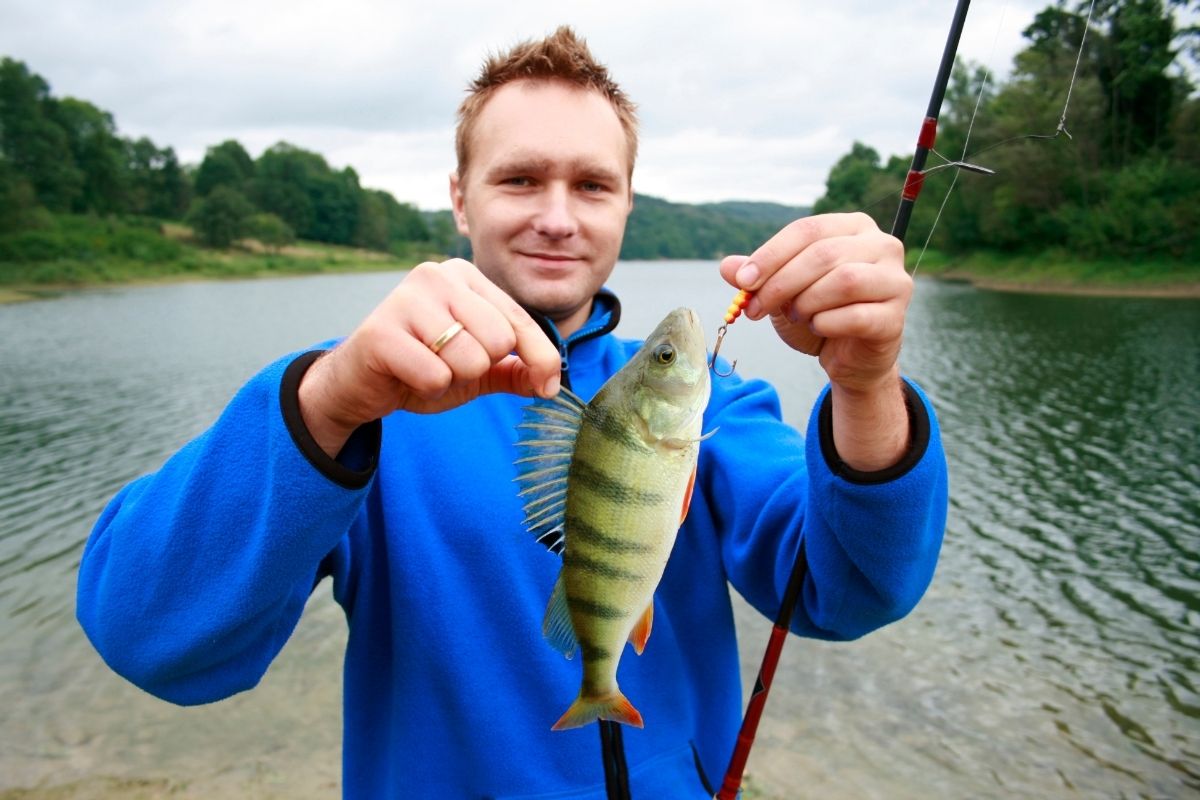
Drop Shot Rig
What was originally a rig designed for bass fishing, the drop shot rig is now a solid choice when it comes to catching perch.
The rig provides anglers with the sensitivity and lightweight feel they need to target perch at the best depth.
How To Tie
First, tie a drop shot hook (size 2 to 6) to the line.
After that, clip a ¼ – ⅛ ounce drop shot weight to your line.
Tie the weight to your line that sits underneath the hook. Finish by adding plastic bait to your hook.
How To Use The Rig
Similar to the other rigs we’ve discussed so far, cast your drop shot rig and wait for your weight to sink.
Next, use very subtle movement to twitch your lure without lifting it from the bottom.
Do this for a few minutes in each spot before reeling your line in a couple of feet.
Repeat, until you get a bite.
When To Use It?
Drop shot rigs are a solid choice when you’ve found a large school of perch.
This is because the rig allows you to fish in one spot until the perch takes your bait. You can also key in a specific depth.
Ned Rig
The ned rig closely resembles the jig rig setup we discussed earlier.
However, it has a very different characteristic action once in the water. This helps make it effective for perch fishing.
How To Tie
You tie a ned rig the same way you tie the jig rig, but you will use a mushroom jig head as opposed to a regular jig head.
When picking your soft plastic bait, it is important to choose one that has been specifically designed for the ned rig. It must also float in the water.
How To Use The Rig
The best chance of success using a ned rig comes from casting it out, giving it time to settle, before then retrieving it slowly.
Ideally, you should then pause every couple of seconds to give the rig time to sink back to the bottom.
The ned rig’s best feature is its combination of a floating bait and mushroom jig head.
This leaves its tail standing straight every single time the rig sinks in the water.
Perch tends to find this absolutely irresistible.
When To Use It?
You can use the ned rig as search bait to find where the perch are feeding.
You can also use it if you’re finding perch to be finicky and unresponsive.
It can be extremely effective when perch feels pressured.
Perch Pounder Rig
The final perch fishing rig on our list is the perch pounder rig.
This rig is perfect for vertical fishing from your boat. It typically works best in deeper waters too.
How To Tie
The perch pounder rig can be tied with one piece of your leader line.
To avoid any tangling, we recommend using a 15 – 20 lb test fluorocarbon line.
Start by tying a loop in your leader line.
Do this by folding a loop back on itself before tying six or seven overhand knots.
Once pulled tight, cut one of your loops arms. You should be left with one piece of line sticking out the leader.
Now, thread a bead onto that piece of line and tie on your bait hook (4 – 8).
You should now repeat the process, by tying an 8-inch loop underneath the first one.
Again add a bead and your bait hook.
Next, you have to cut the leader line approximately 12 inches below your second hook. Then tie a 1-ounce sinker.
Finally, cut off your leader above your top hooks and tie a swivel.
This can then be used to tie it to the main line.
How To Use The Rig
The perch pounder rig will work best when fishing from your boat in deep waters.
In waters more than 50 feet deep, you’ll find it the best type of rig to use.
To use the rig, bait your two hooks (live minnows are best), before lowering it into the water.
Leave it to settle near the bottom before starting retrieval.
When To Use It?
This rig works well in any deep waters known to be home to large schools of perch.
Since it’s better suited to vertical fishing, most anglers use the rig when ice fishing or fishing from a boat.
Which Perch Fishing Rig Is The Best?
When it comes to picking the best rig for perch fishing, we’d have to go with the drop shot rig.
The drop shot rig provides us with the perfect tool for targeting perch.
The sensitivity and lightweight feel of the line make it much easier to lure perch in at the bottom of the water.
This rig can also be used for both vertical fishing from your boat and casting from a shoreline.
In Conclusion
Perch fishing may not be the most difficult type of fishing an angler can partake in, but it still requires high levels of skill and the best setups to catch those trophy fish.
In this article, we’ve shown you the best 6 perch fishing rig setups that you can use to improve your chances of being successful.
While the drop shot rig might just be the best overall rig to use thanks to its versatility and sensitivity, in reality, all of the rigs we’ve looked at offer something that suits different scenarios.
You should now know all you need to know about setting up your perch fishing rig.
All you need to do now is set your rig up and hit the water. Just remember to keep your patience and experiment with multiple rigs to find the one that suits your fishing environment best.
- Do You Need An Indicator For Nymph Fishing? - November 16, 2023
- Fishing Safety Tips For Families - September 25, 2023
- What Is The Best Time To Night Fish At A Lake? - September 18, 2023




